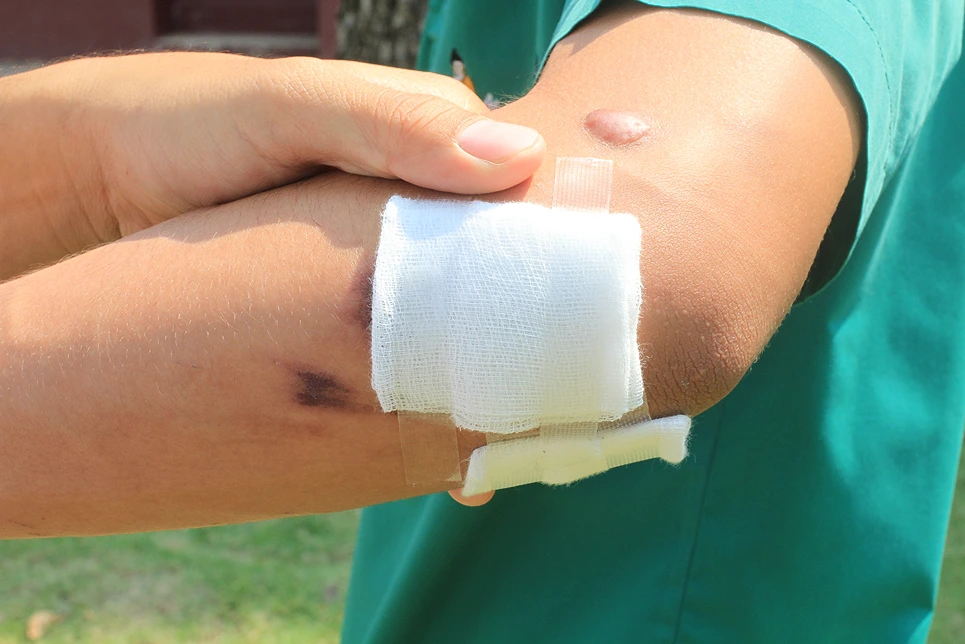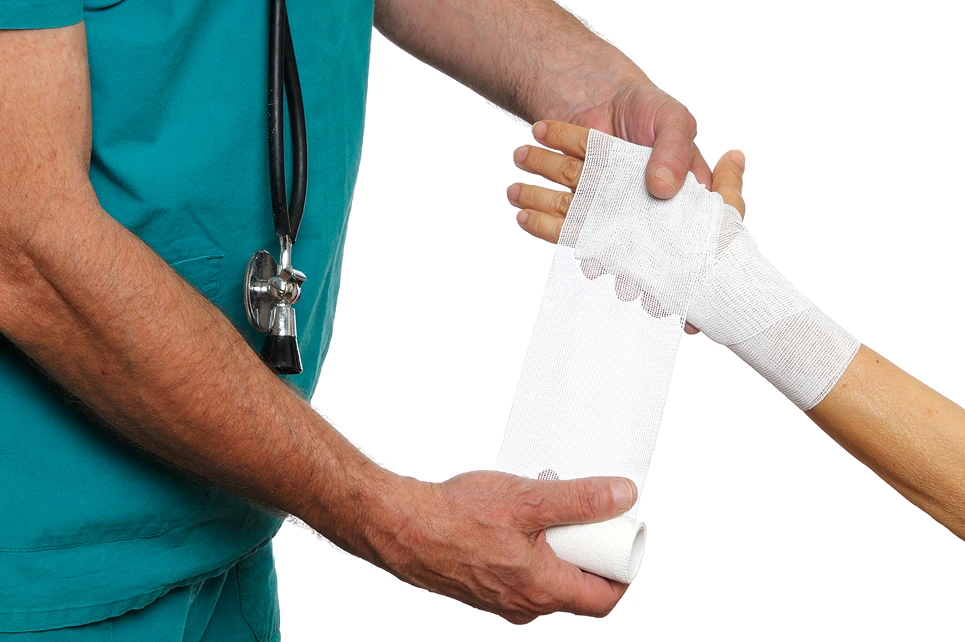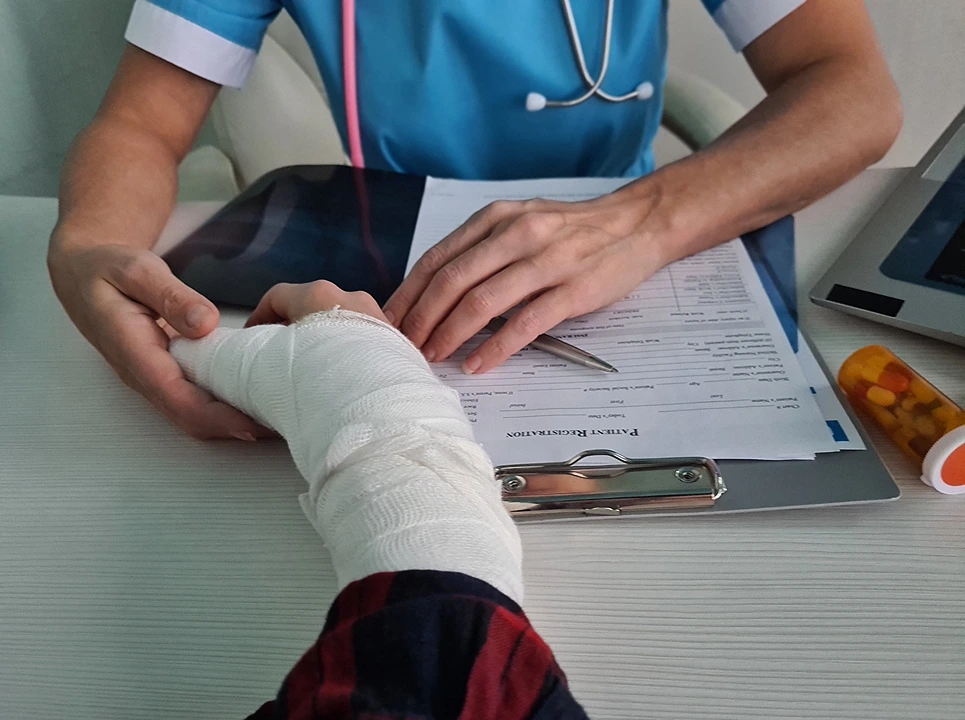

The answer depends. The typical timeframe for wearing a bandage after Mohs surgery for skin cancer is 24-48 hours.
This can vary based on the wound's location, size, and your surgeon's instructions.
Find out exactly how long to wear your bandage after Mohs surgery.

Mohs surgery removes skin cancer layer by layer, preserving healthy tissue. Healing time varies based on factors like wound size, location, patient's health, and closure method.
Small sutured incisions take 1-2 weeks to close, while larger or more complex wounds may take 3-4 weeks.
If the wound heals by secondary intention, it may take longer, and the surgeon may perform Mohs reconstruction to close the defect immediately. Movement and pressure can delay healing, and smoking, diabetes, and certain diseases can slow down recovery.
After Mohs surgery, your surgeon will apply a thick pressure bandage to control bleeding and provide firm pressure as the area heals. Leave the bandage in place for at least 24 hours.
During this time, it's crucial to keep the bandage dry to avoid introducing bacteria and increasing the risk of infection. Your surgeon may advise you to avoid bathing, swimming, or getting the bandage soaked.
After 24-48 hours, you can remove the initial bandage. If you have stitches, keep them dry for a few more days while the wound seals.
Your surgeon will likely tell you to apply a thin layer of petrolatum ointment (like Vaseline) and cover the area with a non-stick dressing to keep the wound moist and prevent scabbing.
After Mohs surgery, proper wound dressings and tape are essential to promote healing and prevent complications like infection.
Dressings with slight compression are recommended, and a gentle tape with zinc oxide can secure the dressing without causing irritation. Keep the wound elevated, and apply petroleum jelly when changing dressings.
Post-Mohs surgery care is crucial for proper healing and minimizing scarring. It's recommended to keep the wound moist with Vaseline applied 3-4 times daily for up to three weeks to prevent scab formation and open wounds if a scab is removed.
Patients should change their dressing daily, clean the area with a water and hydrogen peroxide mixture, and avoid strenuous activity for two weeks post-surgery.

For the next 1-2 weeks, change the dressing daily or when it's soiled or damp. It's normal to have redness, swelling, and tenderness around the surgical site.
To care for the wound, use mild soap and water to clean it gently. Avoid hydrogen peroxide, which can damage healthy tissue. Pat it dry before reapplying ointment and a fresh bandage.
Your surgeon will advise when it's okay to wet the wound, usually 5-7 days for stitched areas. Until then, take sponge baths or securely cover the dressing when showering.
Avoid strenuous physical activity or exercise that could stretch and reopen the healing wound. If an activity causes severe pain or bleeding, stop immediately.
Even after the wound has closed, your surgeon may recommend scar dressings, silicone sheets, or paper tape to minimize scarring over the next 6-12 months.
Extended aftercare is crucial after Mohs surgery due to higher risk of future skin cancers. Regular self-exams of the surgery site and your entire body are necessary, along with annual dermatologist visits for professional skin cancer screenings.
In some cases, Mohs surgery requires removing a larger area of skin and tissue to get clear margins around a tumor, leaving a bigger wound that may need reconstructive surgery using skin grafts or flaps.
Recovery times are longer with reconstructive procedures - often 4-8 weeks until the surgical wound is fully healed. Diligent wound care, including keeping the area moist with ointments and covered with dressings, is essential.

To speed up recovery from Mohs surgery, patients should follow their surgeon's postoperative care instructions carefully.
This includes applying ice packs for the first 48 hours, limiting physical activity for at least a week, and keeping the wound clean and moist with dressings and ointments. Patients should also avoid direct sunlight and keep their heart rate down until fully healed.
Scarring is normal after Mohs surgery and improves over time. Scar tissue formation slows down around the sixth postoperative month, with most scars improving significantly in the first month.
Applying silicone or silicone strips minimizes scarring and improves surgical scars. Follow up with your doctor for proper scar management and to monitor for signs of future skin cancers.
After Mohs surgery, be careful when washing your face to avoid damaging the healing tissue. Keep the incision site dry for 24 to 72 hours post-surgery.
After this, shower with the dressing in place, then remove it, avoiding direct water or soap contact with the wound. Apply Vaseline or Aquaphor before showering to protect the wound.
Swelling, redness, and discomfort are normal after Mohs surgery, but there are warning signs that warrant calling your surgeon:
If you experience these symptoms, contact your surgeon's office immediately, as they could indicate an infection or complication.
With proper wound care and monitoring, most patients recover from Mohs surgery without issues. But it's better to be safe than sorry with your health.

Patience is key to proper healing after Mohs surgery. Follow your surgeon's instructions, including dressing duration, to prevent complications like infections or reopening.
With basic wound care like keeping the area moist, using ointments, and avoiding strain, you'll be on your way to recovery. Be diligent about skin cancer screenings to catch new growths early.
The bandages are gone, but the journey isn't over. Protect your skin with sunscreen, cover up, and get regular skin checks from your dermatologist to prevent future skin cancers.
By following your surgeon's post-Mohs instructions and preventive care, you're giving yourself the best chance at staying cancer-free. Patience and persistence now pays off later.
If your desired appointment type or preferred provider is unavailable online, kindly call (978) 525-0100 for Peabody, MA and (603) 742-5556 for all New Hampshire locations. Alternatively please feel free to send us your request via the patient portal, or via email at info@dermskinhealth.com
*For medical dermatology appointments in MA please dial (978) 525-0100 or fill out the appointment request form above.